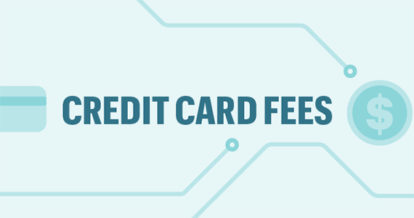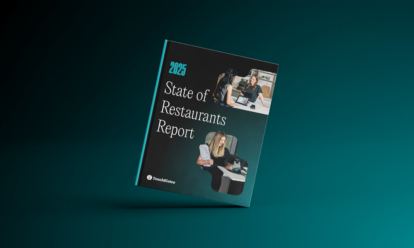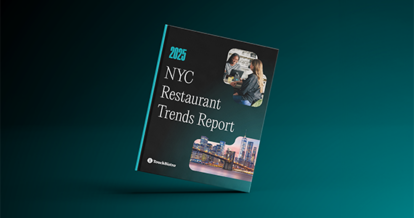If you own a restaurant, you know just how important it is to offer your customers the convenience of paying by credit card.
In an increasingly cashless society, people want the choice to swipe, tap, dip, enter their PIN, or use their phones to authorize mobile payments. And as an accommodating merchant, you want to give your customers what they want – even if credit card fees do come at a cost.
That’s why it pays to be prepared when entering into an agreement with a payment processor, the company that provides you with payment terminals and the service that clears and routes credit card transactions.
There’s only one problem.
The fee structures associated with accepting credit cards can be a bit complicated. There are processing fees, flat fees, and situational fees. Some are negotiable; some aren’t. Entering into an agreement with a payment processor is a lot like hiring a contractor to remodel your restaurant: it’s important to get a few quotes and negotiate the fine points.
Now, for some good news.
You don’t have to take a master class in economics to secure a reasonable rate from a reputable payment processor. All it takes is preparation, an understanding of what’s negotiable, and a keen eye to determine the best fit for your business.
Here are 5 steps that’ll help you get the best payment processing rate for your restaurant.
Disclaimer: All of the information contained in this article is for informational purposes only and does not constitute legal, accounting, tax, or other professional or compliance advice. It is your responsibility to determine whether credit card surcharging is permissible in your jurisdiction. You are solely responsible for ensuring that your activity is compliant with the card network requirements and all laws applicable to you. Non-compliance may result in regulatory consequences or fines.

Find out which fees are negotiable and how to get the best price.
Step 1: Understand Your Business
Before you even approach a payment processor, it’s important to anticipate the information they’ll need from you to prepare a customized rate.
If you have accurate, concise answers, the process will run smoothly and you’ll be in a better position to negotiate applicable fees.
Here are some of the questions a payment processor will ask:
- What are your monthly sales?
- What is your average ticket size?
- What is your monthly or annual credit card processing volume?
- What type of payment terminal do you want? (i.e. wireless, fixed)
- Do you want to rent or purchase your payment terminal?
If you’re setting up a payment processing agreement before you’ve opened your restaurant, you’ll need to provide projections. Rates vary among processing companies, but are usually calculated per transaction.
Payment processing companies typically offer better rates for higher-volume businesses in lower-risk industries, such as large grocery stores, retail chains, and restaurants that do real-time transactions (i.e. nothing with recurring charges or future delivery).
But it’s important to provide these companies with realistic, achievable numbers (your answers to the questions above), to make sure you get the most accurate rate quotes possible.
Step 2: Get Quotes from Multiple Processors
Now that you’ve put together a package of your numbers or projections and have considered your payment terminal needs, it’s time to shop around for a payment processing partner if that option is available to you.
While cost is a big factor when selecting a payment processor, it shouldn’t be the only criteria. It’s important to align with a trusted company that has a good reputation.
There are plenty of payment processors who charge bargain-basement rates, but may not provide dependable customer service. You’ll want to strike a good balance between a reasonable rate and a stable, trustworthy company – ideally one that’s affiliated with a financial institution and has a strong partnership with your POS provider.

Find out which fees are negotiable and how to get the best price.
Tips on Finding Payment Processing Companies:
- Reach out to other, comparable restaurants and ask what companies they use. Ask them what they like or don’t like about their current payment processor, including services and fees.
- Look for big names in the industry. If they’ve been around for a while, chances are they’re a legitimate, dependable business.
- If the option is available to you, research multiple third-party reviews before reaching out to a payment processor. If the same feedback – including features, benefits and disadvantages – keep coming up, you’re probably getting a good picture of what they offer.
Step 3: Understand Credit Card Fees
While individual fees of different payment processors may vary, they all have a basic fee structure. On every statement, you’ll find three types of fees: processing, flat, and situational.
When you’re comparing companies to each other, take a look at the prices associated with each type of fee. It’s important to understand which are negotiable and which are not.
Processing Fees
Payment processors are responsible for capturing fees from credit card brands, and issuing banks and providing a routing service. They charge a number of credit card processing fees to recoup the charges and to be compensated for their services.
| Type of fee | What is it? | Negotiable? |
|---|---|---|
Discount rate (aka qualified rate, merchant rate, discount rate, or MDR) | The fees for processing a payment made with a basic credit card (i.e. a card with no perks/rewards). It’s charged as a percentage of the total transaction (e.g. 1.5%). | Yes |
| Interchange Fee | Each credit card brand (e.g. Visa, Mastercard, American Express, etc.) has a published, percentage-based fee that they charge every time one of their cardholders uses their credit card. It’s the cost of authorizing the charge. The interchange fee is higher for cards with perks or rewards than it is for basic cards. The payment processor is responsible for paying this fee – and passes the cost on to the merchant. | No |
| Non-qualified rate | This is a fee added to the discount rate (above) when non-basic credit cards (rewards, corporate, business) are used – and on transactions completed over the phone when the card is not present. These cards (and card-not-present transactions) carry higher risks, so they’re processed at a higher rate. | Yes |
| Card brand (assessment) fee | This is a fee paid to the card brand (e.g. Visa, Mastercard) on every transaction. The card brand sets the fee, and it applies to all types of cards (basic to premium). | No |
| Transaction Fee | A dollar amount fee on every transaction. | Yes |

Find out which fees are negotiable and how to get the best price.
Flat Fees
Flat fees will vary by payment processor. Here are some of the most common types of flat fees.
| Type of fee | What is it? | Negotiable? |
|---|---|---|
| Annual fee | Charged once a year for the payment processor’s services. | Yes |
| Monthly fee | Charged every month for the payment processor’s services. | Yes |
| Batch fee | The cost of sending each “batch” of completed transactions for the day to the bank for payment. | Yes |
| Network access fee | A fee charged by the credit card brand for accessing their network. | Yes |
| Online reporting fee | The fee for the ability to view your statement online. | Yes |
| PCI fee | Meeting the Payment Card Industry (PCI) Data Security Standard is mandatory. All payment processors must ensure their merchants are following the rules. Some payment processors charge an additional fee to ensure compliance. | Yes |
| Statement fee | The cost of preparing and providing your billing statement. You may try to bypass this fee by asking for online-only access. | Yes |
| Terminal fee | The cost of renting, leasing, or buying a terminal. | Yes |
Situational Fees
As their name suggests, situational fees are charged when specific situations arise. They aren’t necessarily regular or predictable, so it’s important to understand the types of fees that could be incurred.
Here are some of the ones to watch for.
| Type of fee | What is it? | Negotiable? |
|---|---|---|
| Chargeback fee | This is levied when a customer claims fraud or wants a refund. The payment processor will charge this fee for processing the chargeback. | No |
| Retrieval request fee | This is a fee for retrieving information when a customer requests a chargeback (refund). | No |
| International fee | Applied when a customer uses an international credit card. | No |
| Liquidated damages fee | If you choose to terminate your contract with the payment processor before the agreed-upon date, they may charge a fee associated with the monthly profit value of your account. | Yes |
| Monthly minimum fee | Merchants who fail to reach their transaction total for the month or year may be charged this fee. The payment processor may choose to charge you the difference between the agreed-upon monthly minimum and the actual transactions. | Yes |
| Non-sufficient funds (NSF) fee | If you don’t have enough funds in your account to pay the payment processor fees, you will be charged a fee. | No |
| Set-up fee | The cost of setting up or creating an account with a payment processor. | Yes |
Step 4: Compare Payment Processing Pricing Models
For the restaurant industry, payment processors typically provide three types of pricing models:
- Cost Plus Pricing: Also known as Interchange Plus or Interchange Pass-Through pricing, in this pricing model, the merchant pays an interchange fee and processor markup. The markup is set by the payment processor and consists of a fixed percentage of the total check, the card brand fee, and a per-transaction flat fee, which means your fees will fluctuate a bit.
- Flat Fee: Like the name implies, a Flat Fee or Fixed Rate pricing model charges a consistent fee month after month. Flate Fee pricing usually consists of a percentage-based fee plus a dollar amount for each transaction.
- Tiered Pricing: A Tiered Pricing model sorts credit card transactions into three categories – qualified, mid-qualified, and non-qualified – based on the level of risk each card brand carries. Your payment processor charges the lowest fee for qualified transactions and the highest fee for non-qualified transactions.
When reviewing quotes from payment processing companies, not all these options may be available to you and it’s not always possible to compare apples to apples. Some processors may charge low fees in one place but higher somewhere else. Some may include hardware such as electronic credit card readers (or terminals) in the agreement.
Step 5: Negotiate
When you’ve narrowed it down to one or two payment processors, it’s time to make sure you’re getting the best deal possible. Here are some tips on negotiating:
Be Prepared
Don’t just take a cursory glance at the quotes you’ve gathered from payment processors. Pour over them so you understand what you’re paying for. You should be able to list the pros and cons of each quote before you head to the negotiating table. Use our cheat sheet to help you keep track of what the fees are for and which ones are negotiable.
Ask Questions
After you’ve gone over the quote with a fine-toothed comb, book a call or in-person meeting and ask the sales rep to go over it with you, line by line. Ask them to explain each feature and fee. And when you arrive at each negotiable fee, ask for the best price they have.
Ask About Price Matching
If you’ve uncovered a better price elsewhere, share it with the payment processor you want to work with to see if they can price-match. Even if they can’t meet the exact price, they may be able to offer perks like free payment terminals or a shorter contract. This may be worth more than a lower fee.
Get Advice from Other Professionals
Take your time when reviewing quotes from payment processors. Consider sharing them with an accountant or lawyer to help you find the right overall fit.
“Is That the Best You Can Do?”
When you think you’ve negotiated your contract to the lowest possible price and the best possible features, take one further step before you close the deal. Be absolutely sure that they are giving you the most optimal pricing. It’s surprising what a simple question can accomplish.
When you consider the number of credit card transactions your restaurant will ultimately process every day, it’s well worth the time it takes to understand credit card fees and ensure you’re getting the best rate possible.
Want to learn more about payment processing?
Learn how to save money on payment processing fees
Sign up for our free weekly TouchBistro Newsletter







